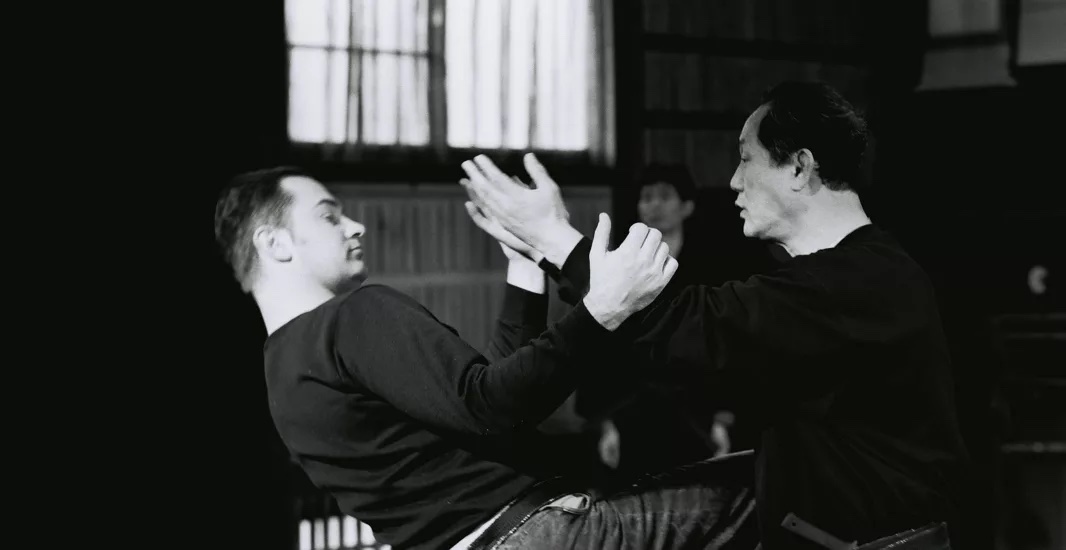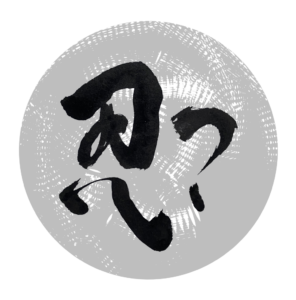But basics can be started from any point-—there is no need to start from the first form and provided you do all of them some time it does not matter which one you do first. There is also no fixed historical reason to start from the beginning. Rather, what I find during teaching is that before anything else one should learn the important lesson that “either is OK.” But it seems that not many people have realized this yet.
Some people even believe that Kihon Happo means simply the first eight kata, the movements themselves. Of course, this is also true, but if you can do no more than the first eight kata nothing will come of them. Anyone can do them! Unless you can perform the kata correctly and link them up to the limitless variations, you cannot say that you have accomplished Kihon Happo.
Foreign instructors coming to train in Japan have problems even in the basic forms of the kata. They say that what they learned abroad is different from what they are being taught in Japan, or that even in Noda the forms vary slightly from instructor to instructor. Of course they do! No two people are the same, so it would indeed be strange if everybody performed them the same way. However, just because the shihan in Noda all move in slightly different ways, this does not mean that foreign instructors can also do whatever they like. Many actually incorporate serious mistakes into their movements. To be quite honest, foreign instructors should act more responsibly. I see many students who are obviously the end product of half-baked training where the instructor couldn’t do Kihon Happo correctly himself, and so invented an arbitrary method to cover this up.
I want all shidoshi to be aware of the responsibility they have to transmit the teachings correctly. If you train for a long time, you become able to see at a glance whether someone’s basic movements are correct They dont have to all be the same, they must just be correct.
That’s the feeling l want everyone to grasp. It takes time to understand this mindset. To a certain extent, the longer you train, the more you understand the basics and budo itself. But it is precisely when you are devoting yourself single mindedly to mastering the basics that you can’t understand the wider principles.
Kihon Happo is like a bridge between the conscious and the unconscious. I think one can say that in the midst of training the unconscious, you are in fact acting consciously. It is important to get an even balance between the two. As I accompany Soke around the world, one thing that always strikes me is the fact that everyone has problems with the basics. They all know that the basics are important, but because they do not understand or cannot do such an important thing, they lose their self-confidence in the martial arts. The work doesn’t stand up as an art.
At present good shidoshi are emerging one after another throughout the world. I want everyone to treasure having communication with them. Once you get stuck with a bad teacher, no matter how long you train you`ll never get good. Videos and books are there to help. lt’s worth spending time on the basics, even just on the forms of Kihon Happo and not trying to run before you can walk. Soke teaches that the most important thing in budo is “living.” Kihon Happo is a living base. One of the basic thoughts of Buddhism is “the impermanence of all things.” All things are continually changing, and nothing is permanent. It sounds obvious, but few people realize the truth behind it. True Kihon Happo is likewise a living thing. It is permanently changing. My own Kihon Happo changes from one moment to the next. What has happened up until now had good reasons for it. But recently Soke has started providing answers to Kihon Happo. He waits until the students have reached a certain stage of maturity. Once that stage comes, he can teach them naturally, like a flower booming or a fruit getting ripe. And each of us can only waits until the our time comes. As I said, Kihon Happo cannot be defined or delimited. Naturally, I do not think that my own Kihon Happo is definitely right, nor is it definitely wrong. To grow into a large tree as a martial artist, the roots are indispensable. I think that about sums up my views on Kihon Happo.


